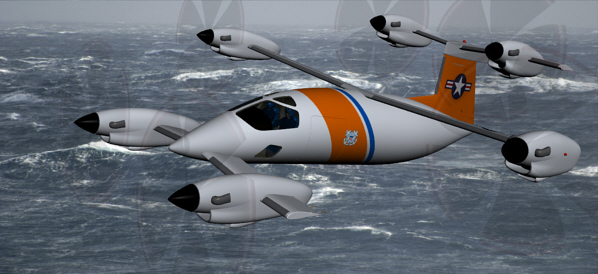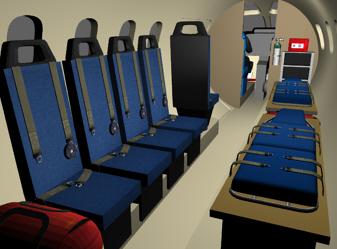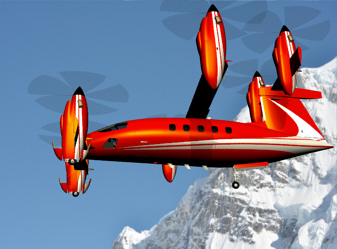Faster, Further, Safer ...
Introducing the future of Search and Rescue aircraft (SAR)
 Whether rescuing those injured high in alpine regions, saving those lost far out to sea, or finding the missing closer to home in times of flooding, no aircraft have been more significant than those used for search and rescue.
Whether rescuing those injured high in alpine regions, saving those lost far out to sea, or finding the missing closer to home in times of flooding, no aircraft have been more significant than those used for search and rescue.
 Searching has long been something more in the purview of conventional aircraft. The reason is simple: range and loiter time. In order to find the missing, much territory must be scoured and in as short of a period of time as possible. That requires an aircraft that can cruise with the efficiency of a fixed wing.
Searching has long been something more in the purview of conventional aircraft. The reason is simple: range and loiter time. In order to find the missing, much territory must be scoured and in as short of a period of time as possible. That requires an aircraft that can cruise with the efficiency of a fixed wing.
 Rescue is a different story. Seldom will a searching fixed wing aircraft be able to land near the victim. Even if such a hazardous landing is possible, it’s almost never near the objective of the search. Often times, the people involved are in some form of distress or injury. Here, of course, the helicopter has made a dramatic historical impact, easily overcoming environmental obstacles.
Rescue is a different story. Seldom will a searching fixed wing aircraft be able to land near the victim. Even if such a hazardous landing is possible, it’s almost never near the objective of the search. Often times, the people involved are in some form of distress or injury. Here, of course, the helicopter has made a dramatic historical impact, easily overcoming environmental obstacles.
 With Hexplane, the two capabilities are handsomely combined into one airframe, and when rescue is accomplished, superior travel times to medical facilities are key to increasing victims’ chances for survival. Additionally, an ability to hover at higher altitudes out of ground effect (HOGE) extends the alpine rescue capability of Hexplane beyond previously available performance.
With Hexplane, the two capabilities are handsomely combined into one airframe, and when rescue is accomplished, superior travel times to medical facilities are key to increasing victims’ chances for survival. Additionally, an ability to hover at higher altitudes out of ground effect (HOGE) extends the alpine rescue capability of Hexplane beyond previously available performance.

Speeds to 450mph
Ranges to 1,500 miles
Operates above the weather
Sea level cabin to 25,000 feet
Unusually safe
Two litter interior
High altitude HOGE capable
9,000 fpm SSL climb rates
Service ceiling above 35,000feet
2.5 times faster than helicopter
The HOGE capability of Hexplane is exceptional, making alpine operations far safer than ever for both the rescued and the rescuers.
Plenty of room for aircrew, EMT's, observers and passengers.
"Hexplane" and "Hexplane Corp" are trade marks of Hexplane Corp.




